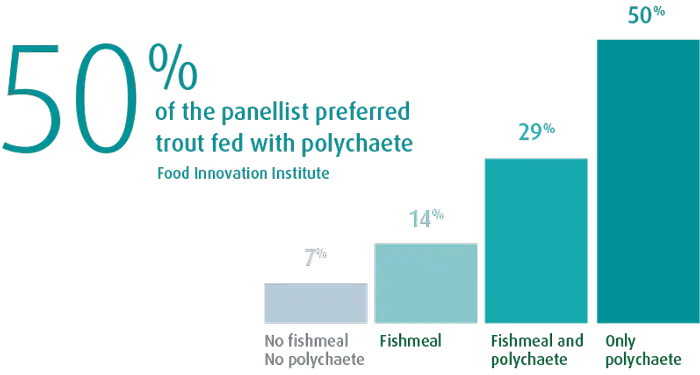This article was first published in Aqua Feed Magazine July 2025
Flavours made to last
In aquaculture, the final weeks before harvest offer a great opportunity: feed adjustment during this phase can greatly influence product quality — from flavour and colour to market value.
These last weeks the quality is fine-tuned, and it’s here that functional marine ingredients are proving their worth. By reintroducing natural marine compounds into the diet shortly before harvest, producers can enhance the final product’s sensory appeal — without compromising sustainability goals.

“I hope more feed makers give these ingredients a go, and see just how far freshness and function can take them."."
OddGeir Oddsen, managing director, ProChaete
Fresh functionality
Over the past decade, sustainability has shifted from trend to necessity. The industry has responded with impressive innovations in plant-based protein and circular sourcing. But when it comes to flavour, colour, and nutritional profile, especially for high-end seafood, marine inputs still have a key-role to play.
This is where polychaete worms and superfresh shrimp residuals enter the picture. Rich in long-chain omega-3 fatty acids, bioactive compounds, natural pigments and marine peptides, these ingredients carry the taste and aroma of the ocean. When added in small amounts near the end of the growth cycle, they help restore the seafood character to fish — naturally and effectively.
The approach is simple. No overhaul. No complicated reformulation. Just a strategic late-stage tweak at the end that elevates the product.
Great rewards
Scientific studies and commercial trials support this strategy. In a 12-week trial with rainbow trout, fish fed a diet supplemented with as little as 2% polychaete showed a 21% increase in final weight, a 12% improvement in protein efficiency, and a 9% increase in specific growth rate compared to control groups.
Even more compelling is how these changes affect the eating experience. In sensory tests conducted by the Food Innovation Institute, 50% of the panellists preferred trout finished on polychaete-rich feed. The fish were rated higher for aroma, flavour and texture.
These are not abstract benefits — they are measurable improvements in the qualities that matter most at the point of sale. Better-tasting fish means better consumer acceptance. Brighter colour and improved texture mean stronger positioning in premium markets.

9%
Specific Growth Rate with use of 2% Polychaete
12%
Protein Efficiency with use of 2% Polychaete
21%
Final Weight increased with use of 2% Polychaete
Premium ingredient
What makes this approach especially appealing is that these ingredients are not harvested from the wild or synthetically made. The polychaetes are farmed and the shrimp ‘leftovers’ is captured straight from the peeling line. It is preserving nutritional value while preventing waste. Produced with the right standards makes them compatible with modern sustainability frameworks, including ASC and SPF certification.
It is a perfect example of circular thinking: polychaete and shrimp heads that once went to waste are now enhancing fish feed. Fish residuals combined with polychaete are transformed into functional additives for shrimp. The loop is clean, efficient, and resource-smart.
A phenomenal finish
By aligning late-stage feed composition with both market demand and nutritional science, producers can offer seafood that truly stands out. Not just in the tank, but on the plate. It can be the first thing customers notice — and the reason they come back for more.
This is not about going back to fishmeal. It is about going forward with functional marine nutrition. Thoughtfully, sustainably, and precisely when it matters most.